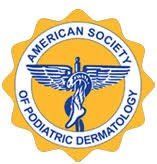Serving PASADENA, MD 21122 and Surrounding Areas including Glen Burnie, Severna Park, Arnold
This is a placeholder for the Yext Knolwedge Tags. This message will not appear on the live site, but only within the editor. The Yext Knowledge Tags are successfully installed and will be added to the website.
Neuromas & Other Soft Tissue Tumors
Neuromas & Other Soft Tissue Tumors
New Patients WelcomeMost Insurance AcceptedIn Practice Since 1990
New Patients Welcome | Insurance Accepted | Practicing Since 1990
Neuromas and Other Soft Tissue Tumors
A neuroma is a thickening of nerve tissue that may develop in various parts of the body. The most common neuroma in the foot is a Morton’s neuroma, which occurs between the third and fourth toes. It is sometimes referred to as an intermetatarsal neuroma. Intermetatarsal describes its location in the ball of the foot between the metatarsal bones. Neuromas may also occur in other locations in the foot.
The thickening or scaring of the nerve that defines a neuroma is the result of compression and irritation of the nerve. This compression creates enlargement of the nerve, eventually leading to permanent nerve damage.
Anything that causes compression or irritation of the nerve can lead to the development of a neuroma. One of the most common offenders is wearing shoes that have a tapered toe box or high-heeled shoes that cause the toes to be forced into the toe box. People with certain foot deformities—bunions, hammertoes, flatfeet or more flexible feet—are at higher risk for developing a neuroma. Other potential causes are activities that involve repetitive irritation to the ball of the foot, such as running or court sports. An injury or other type of trauma to the area may also lead to a neuroma.
If you have a Morton’s neuroma, you may have one or more of these symptoms where the nerve damage is occurring:
- Tingling, burning or numbness
- Pain
- A feeling that something is inside the ball of the foot
- A feeling that there is something in the shoe or a sock is bunched up
The progression of a Morton’s neuroma often follows this pattern:
- The symptoms begin gradually. At first, they occur only occasionally when wearing narrow-toed shoes or performing certain aggravating activities
- The symptoms may go away temporarily by removing the shoe, massaging the foot or avoiding aggravating shoes or activities
- Over time, the symptoms progressively worsen and may persist for several days or weeks.
- The symptoms become more intense as the neuroma enlarges and the temporary changes in the nerve become permanent
To arrive at a diagnosis, we will obtain a thorough history of your symptoms and examine your foot. During the physical examination, we attempt to reproduce your symptoms by manipulating your foot. Other tests or imaging studies may be performed.
The best time to be evaluated is early in the development of symptoms. Early diagnosis of a Morton’s neuroma greatly lessens the need for more invasive treatments and may help you avoid surgery.
In developing a treatment plan, we will first determine how long you have had the neuroma and will evaluate its stage of development. Treatment approaches vary according to the severity of the problem
Treatment Options For Mild to Moderate Neuromas
- Padding: Padding techniques provide support for the metatarsal arch, thereby lessening the pressure on the nerve and decreasing the compression when walking
- Icing: Placing an icepack on the affected area helps reduce swelling
- Orthotic devices: Custom orthotic devices provided by your foot and ankle surgeon provide the support needed to reduce pressure and compression on the nerve
- Activity modifications: Activities that put repetitive pressure on the neuroma should be avoided until the condition improves
- Shoe modifications: Wear shoes with a wide toe box and avoid narrow-toed shoes or shoes with high heels
- Medications: Oral nonsteroidal anti-inflammatory drugs (NSAIDs), such as ibuprofen, may be recommended to reduce pain and inflammation
- Injection therapy: Treatment may include injections of cortisone, local anesthetics or other agents
Surgery may be considered in patients who have not responded adequately to nonsurgical treatments. we will determine the approach that is best for your condition. The length of the recovery period will vary depending on the procedure performed.
Regardless of whether you have undergone surgical or nonsurgical treatment, we will recommend long-term measures to help keep your symptoms from returning. These include appropriate footwear and modification of activities to reduce the repetitive pressure on the foot.
Neuromas and Other Soft Tissue Tumors
A soft-tissue biopsy is the removal and microscopic examination of a small sample of soft tissue for diagnostic purposes. Soft tissue includes the skin, fat, muscle and tendons that surround, connect or support other tissues or organs. Soft-tissue biopsies require little time or involvement from the patient. They enable the us to reach an accurate diagnosis and to determine the best treatment for the specific condition.
Conditions identified by soft-tissue biopsies:
- Freckles (macules)
- Benign pigmented, or colored, spots (moles or nevus)
- Fungal or bacterial infections
- Rashes (such as eczema or dermatitis)
- Lesions related to a disease affecting the entire body (such as diabetes)
- Nodular conditions (such as a ganglion cyst, lipoma or fibroma)
- Toenail conditions (onychomycosis, psoriasis, melanoma)
- Wart-like growths on the skin (benign keratoses)
- Premalignant conditions (actinic and seborrheic keratoses)
A biopsy involves removal of a small piece of tissue and takes just a few minutes. The procedure performed will depend on the tissue to be sampled. After numbing the area, the surgeon performs one of the following:
- Shave biopsy: A thin piece of tissue is shaved off
- Punch biopsy: A small, round instrument removes a tiny core of tissue. Stitches may be needed
- Incisional or excisional biopsy: a piece, or the entire lesion, is removed. Stitches are often needed
Once the sample is obtained, we send it to a clinical laboratory so that the condition can be identified. The specimen will be examined by a pathologist who specializes in evaluating soft-tissue biopsies.
An Experienced, Educated Podiatrist
Dr. Mickenberg is a board-certified member of the American Board of Podiatric Surgery (ABPS) and a fellow in the American Society of Podiatric Surgeons (ASPS). He is also a member of the American Podiatric Medical Association and the Maryland Podiatric Medical Association.
For more information about our services, call (410) 255-0040. Most major medical insurance is accepted here.
Call (410) 255-0040 for an Appointment
Our Expertise
Doctor of Podiatric Medicine
Board Certified, American Board
of Foot and Ankle Surgery
Fellow, American Society
of Podiatric Surgeons
Call (410) 255-0040
to schedule an appointment
VISIT US
,
This is a placeholder for the Yext Knolwedge Tags. This message will not appear on the live site, but only within the editor. The Yext Knowledge Tags are successfully installed and will be added to the website.
CALL US
HOURS
This is a placeholder for the Yext Knolwedge Tags. This message will not appear on the live site, but only within the editor. The Yext Knowledge Tags are successfully installed and will be added to the website.
This is a placeholder for the Yext Knolwedge Tags. This message will not appear on the live site, but only within the editor. The Yext Knowledge Tags are successfully installed and will be added to the website.
Hi. Do you need any help?
Privacy Policy
| Do Not Share My Information
| Conditions of Use
| Notice and Take Down Policy
| Website Accessibility Policy
© 2024
The content on this website is owned by us and our licensors. Do not copy any content (including images) without our consent.









Share On: